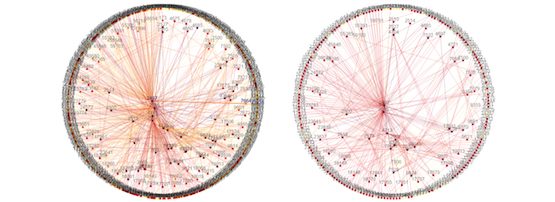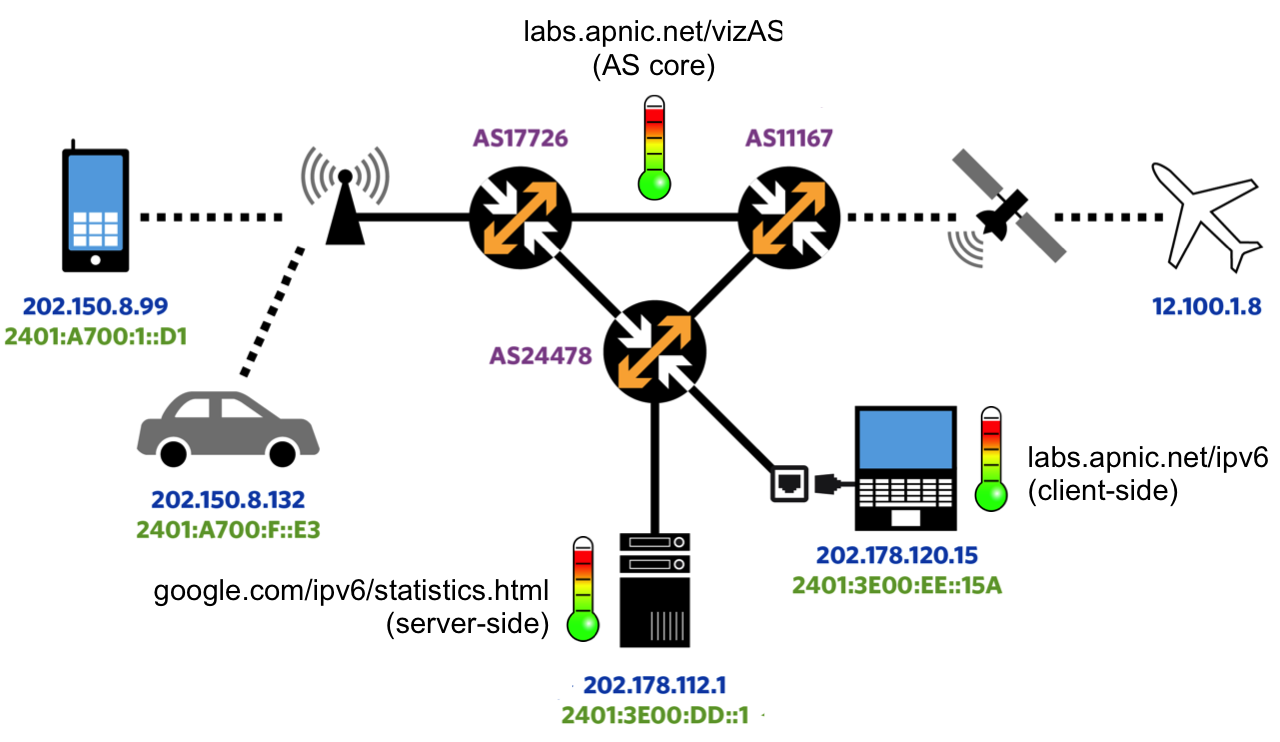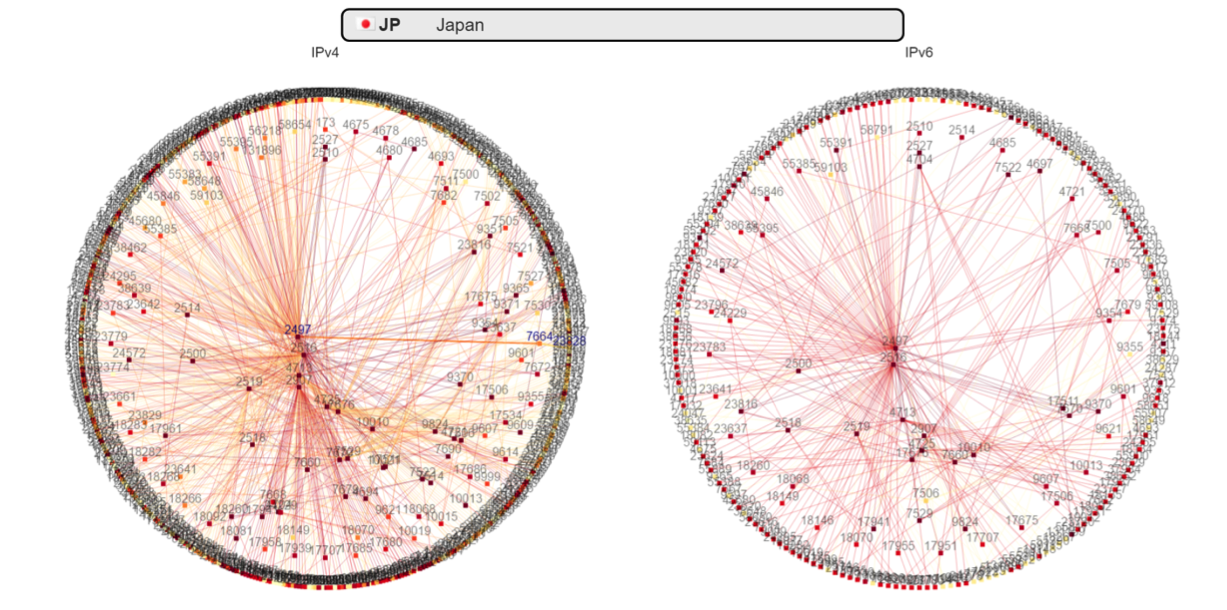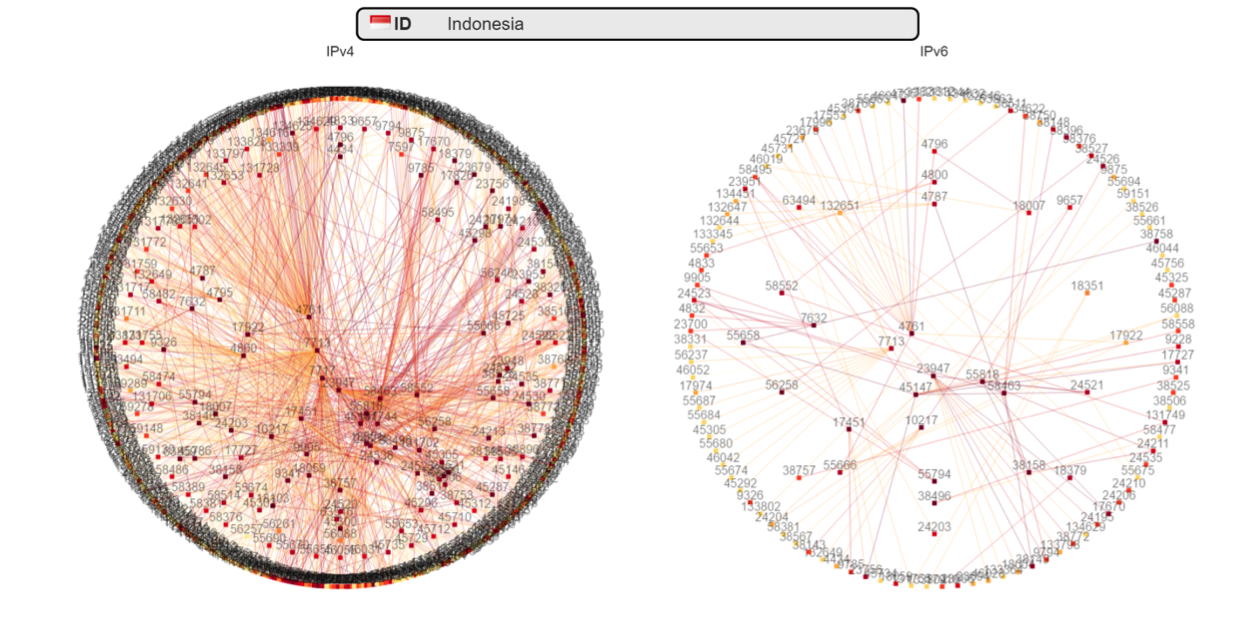
Measuring the state of IPv6 deployment is difficult, particularly when there are so many different measurement tools out there offering different stats.
APNIC Labs shows global IPv6 deployment at 6% while Google shows it at 12%, why such disparity? The answer is because they are measuring from different vantage points on the network. These are three of the many possible measurement points people have used:
- End users – this involves measuring the number of end devices capable of using IPv6. This is the method that APNIC Labs uses.
- Content servers – this involves measuring what percentage of users are accessing your content through IPv6. This is the method Google uses.
- Core – this involves measuring the IPv6 BGP peering relationships. This is the method that CAIDA’s AS Core map and APNIC Labs VizAS tool uses.
The third measurement is less talked about but on closer inspection speaks loudly about the mindset of many economies’ IPv6 deployment plans.
Improve your economy’s IPv6 vizAS
Last month at the Indonesian Network Information Centre’s most recent Open Policy Meeting (IDNIC OPM) I showed attendees a set of vizAS visualizations from several economies, comparing each economy’s IPv4 and IPv6 networks.
Visualize your country’s BGP network with vizAS
While many economies show different network density for IPv4 compared to IPv6—with IPv4 being a lot denser than IPv6—two economies that buck this trend are Japan and Germany.
Click images to enlarge
What these visuals show us is that a very large majority of AS numbers in these two economies have advertised their IPv6 prefixes. Although this does not necessarily mean more end users and content providers in these economies are accessing/providing content through IPv6 (see table below), it does show that their network operators are not just planning for deploying IPv6, but are taking the first steps.
| Economy | APNIC Labs | |
| Australia | 5.57% | 3.55% |
| Belgium | 53.50% | 44.31% |
| China | 0.41% | 0.62% |
| India | 2.18% | 1.48% |
| Indonesia | 0.12% | 0.06% |
| Japan | 20.76% | 11.63% |
| USA | 33.43% | 29.51% |
Table 1 – IPv6 measurements from APNIC Labs and Google as of 8 July 2016
This is an important message that many people may not know: you don’t have to wait for a comprehensive deployment plan before advertising your IPv6 prefix. You can take the first step by safely advertising your IPv6 on your border router as soon as you receive it from APNIC.
This simple act can be enough to pique the interest and increase the confidence of key people in your organization to proceed with the next steps, and show outsiders that you are active.
Learn how to advertise your IPv6 prefix on your border router
With this, I set attendees at IDNIC OPM the challenge of advertising their IPv6 prefixes to their BGP peers and upstreams in an effort to match the IPv6 vizAS circle to the IPv4 circle; a challenge I extend to you and your economy too!
Kickstart your IPv6 deployment today.
The views expressed by the authors of this blog are their own and do not necessarily reflect the views of APNIC. Please note a Code of Conduct applies to this blog.





